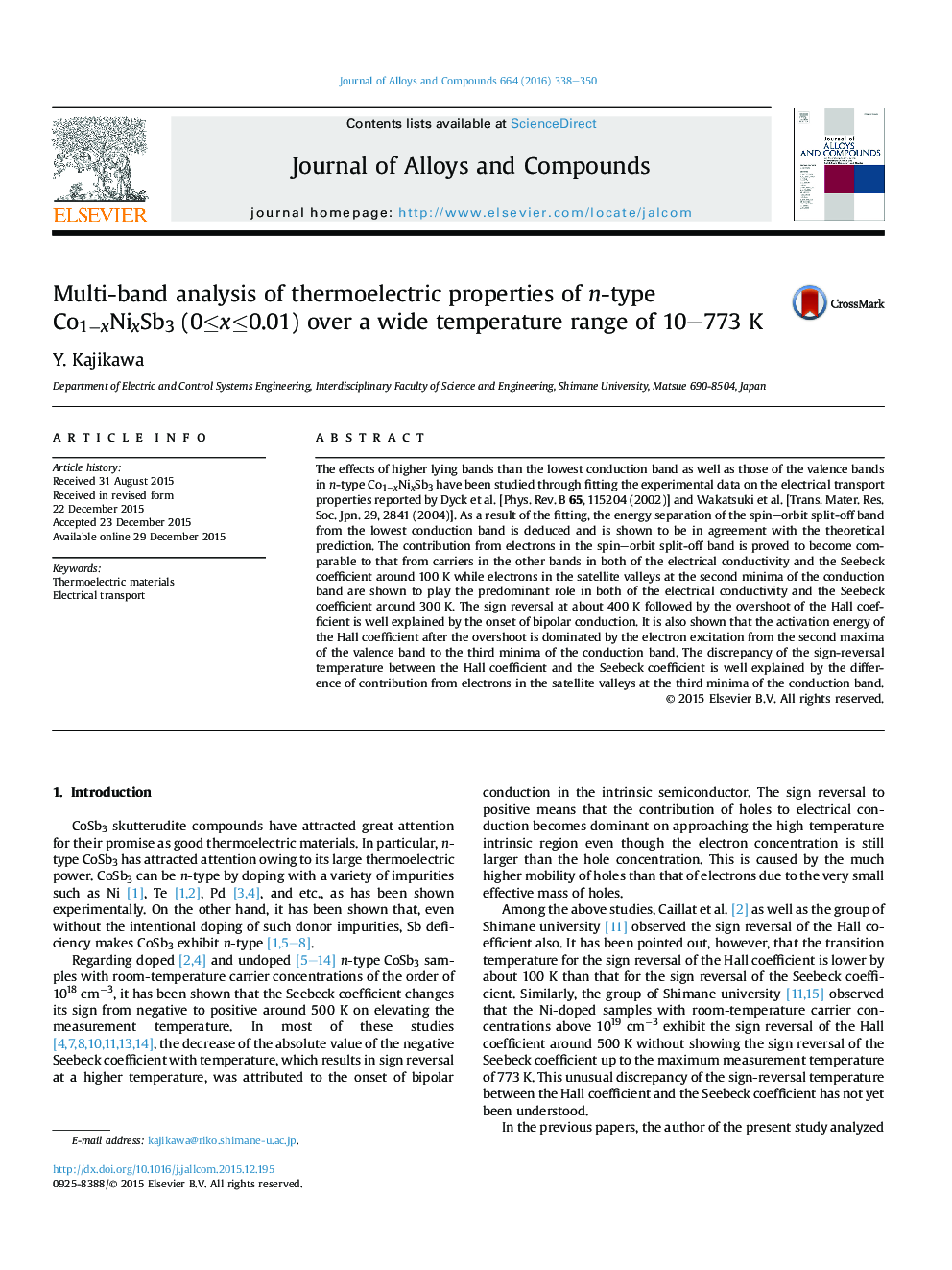| Article ID | Journal | Published Year | Pages | File Type |
|---|---|---|---|---|
| 1607150 | Journal of Alloys and Compounds | 2016 | 13 Pages |
Abstract
The effects of higher lying bands than the lowest conduction band as well as those of the valence bands in n-type Co1âxNixSb3 have been studied through fitting the experimental data on the electrical transport properties reported by Dyck et al. [Phys. Rev. B 65, 115204 (2002)] and Wakatsuki et al. [Trans. Mater. Res. Soc. Jpn. 29, 2841 (2004)]. As a result of the fitting, the energy separation of the spin-orbit split-off band from the lowest conduction band is deduced and is shown to be in agreement with the theoretical prediction. The contribution from electrons in the spin-orbit split-off band is proved to become comparable to that from carriers in the other bands in both of the electrical conductivity and the Seebeck coefficient around 100 K while electrons in the satellite valleys at the second minima of the conduction band are shown to play the predominant role in both of the electrical conductivity and the Seebeck coefficient around 300 K. The sign reversal at about 400 K followed by the overshoot of the Hall coefficient is well explained by the onset of bipolar conduction. It is also shown that the activation energy of the Hall coefficient after the overshoot is dominated by the electron excitation from the second maxima of the valence band to the third minima of the conduction band. The discrepancy of the sign-reversal temperature between the Hall coefficient and the Seebeck coefficient is well explained by the difference of contribution from electrons in the satellite valleys at the third minima of the conduction band.
Related Topics
Physical Sciences and Engineering
Materials Science
Metals and Alloys
Authors
Y. Kajikawa,
